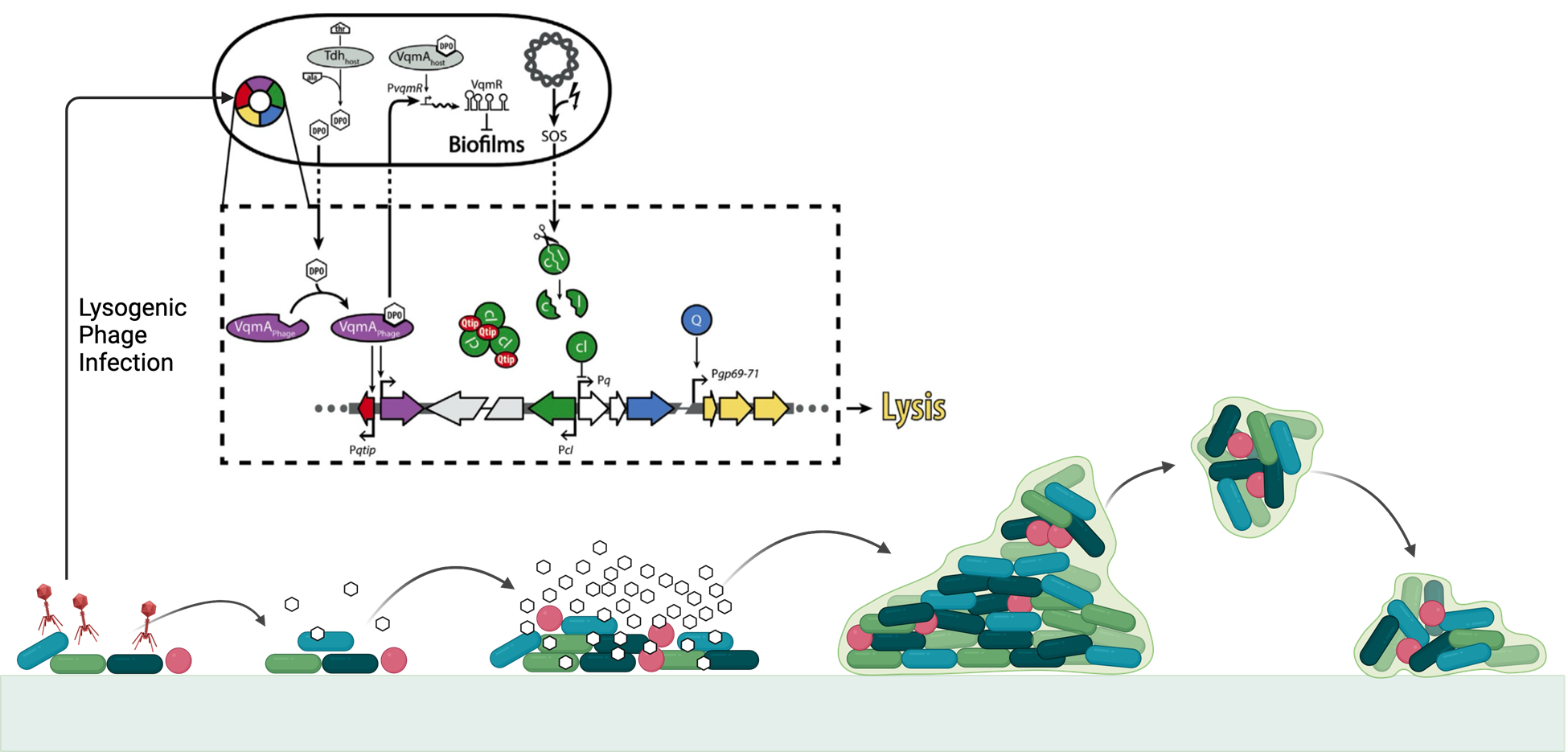Engineering Phage to Lyse Cells as a Result of Bacterial QS in ESKAPEE Pathogens
The rise of antibiotic-resistant pathogens is a significant public health threat, particularly in built environments such as hospitals. ESKAPEE pathogens – Enterococcus faecium, Staphylococcus aureus, Klebsiella pneumoniae, Acinetobacter baumannii, Pseudomonas aeruginosa, Enterobacter species, and Escherichia coli – are among the most dangerous, being highly linked to deaths associated with antibiotic resistance. These pathogens can form biofilms, which shield them from treatments and contribute to their persistence, especially in nutrient-rich, hard-to-clean environments like sink drains.
This project aims to engineer bacteriophages (phages) that respond to bacterial quorum-sensing (QS) signals called autoinducers (AI) – chemical messages that bacteria use to coordinate collective behaviors, including biofilm formation. By designing phages to detect these signals, we expect to induce targeted bacterial lysis, breaking down biofilms and preventing their spread. We use bioinformatic and comparative genomic analyses to identify key QS systems in ESKAPEE pathogens found in built environments. Then, through synthetic genomics, we will modify phages to express QS signal receptors, enabling them to lyse bacteria when AIs are detected.

Top Figure: Host AI-induced phage lysis.
Researchers
Crissy Massimino
